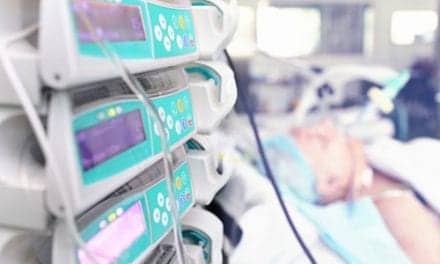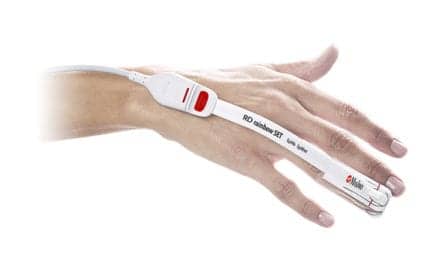Veracyte Inc has begun making its next-generation Percepta Genomic Sequencing Classifier (GSC) available to physicians, providing them with expanded lung cancer risk information that can further guide next steps for patients with suspicious lung nodules.
The RNA whole-transcriptome sequencing-based test is Veracyte’s first commercial product to emerge since entering into the long-term strategic lung-cancer collaboration with Johnson & Johnson Innovation LLC, which was announced in January 2019.
“Lung nodules are often challenging to diagnose using traditional tools, which can lead to unnecessary invasive procedures or to delayed treatment,” said Giulia Kennedy, PhD, Veracyte’s chief scientific and medical officer. “The ability to use genomic testing – such as the Percepta GSC – to determine which patients need intervention and those who may be safely monitored with routine imaging can help improve patient outcomes.”
Veracyte’s commercial introduction of the Percepta GSC follows the May 2019 presentation of clinical data showing that the genomic test down-classifies patients with suspicious lung nodules to “low risk” with a negative predictive value of 91%.
This means these patients have a low likelihood of cancer and may therefore avoid unnecessary invasive procedures. The findings also show that the test up-classifies patients to high risk with a positive predictive value of 65%, suggesting that there is a higher likelihood these patients have cancer, which can help guide next intervention steps.
The American College of Chest Physicians recommends lung nodule patients with a low risk of cancer undergo monitoring with CT imaging and that patients with a risk of 65% or greater undergo surgical treatment. The Percepta GSC study involved 412 lung-nodule patients whose results were inconclusive following bronchoscopy, a common nonsurgical procedure to assess lung nodules for cancer.
The Percepta GSC utilizes machine learning and is built on novel “field of injury” science – which identifies genomic changes associated with lung cancer in current or former smokers using a simple brushing of the person’s airway. The test is performed on a sample from the patient’s main lung airway, which is collected during a bronchoscopy. Veracyte estimates that approximately 360,000 bronchoscopies are currently performed each year to evaluate suspicious lung nodules for cancer and that up to 60 percent of these produce inconclusive results.
“We are excited to make the Percepta GSC available to physicians as an important tool that will help them further guide next steps for patients undergoing evaluation for suspicious lung nodules,” said Bonnie Anderson, Veracyte’s chairman and chief executive officer.
Veracyte is collaborating with the Lung Cancer Initiative at Johnson & Johnson to advance the development and commercialization of novel diagnostic tests to detect lung cancer at its earliest stages, when the disease is most treatable. The collaboration is accelerating two key lung cancer programs for Veracyte, including the commercialization of its Percepta classifier on the company’s RNA whole-transcriptome sequencing platform well as the development of the first noninvasive nasal swab test for early lung cancer detection.
Veracyte continues to expect to unveil early data for the nasal swab test later this year. Under terms of the agreement, Veracyte and the Lung Cancer Initiative at Johnson & Johnson will combine clinical study cohorts involving more than 5,000 patients with multiple years of clinical outcome data. Veracyte will contribute bronchial and nasal samples from its clinical trials, which are part of the company’s extensive lung cancer-focused biorepository.











Going to my 4th radiation treatment tomorrow morning I am so glad still have to do biopsy of throat Aug 14th